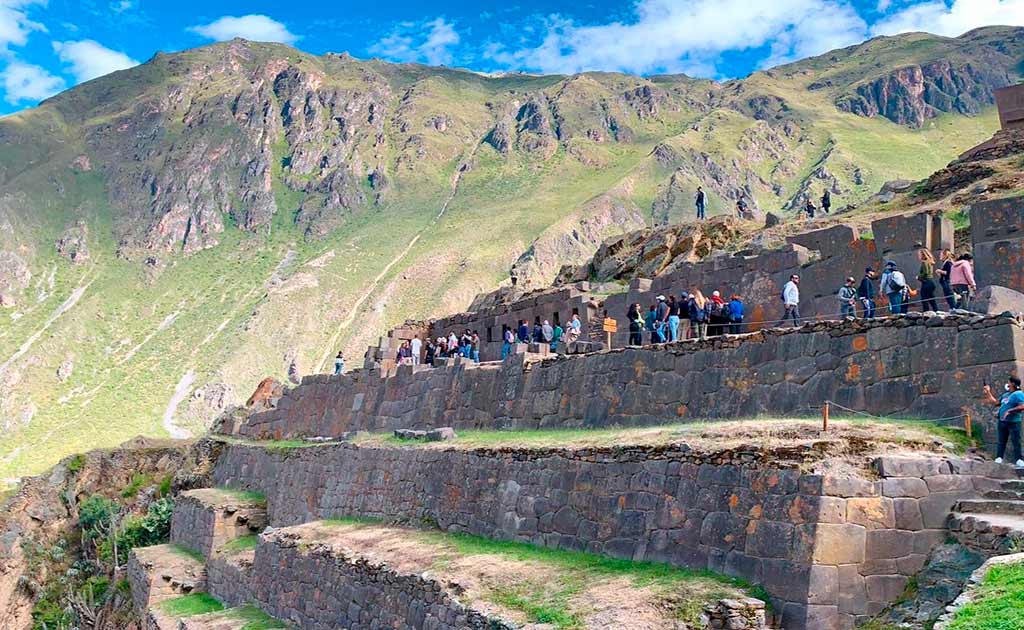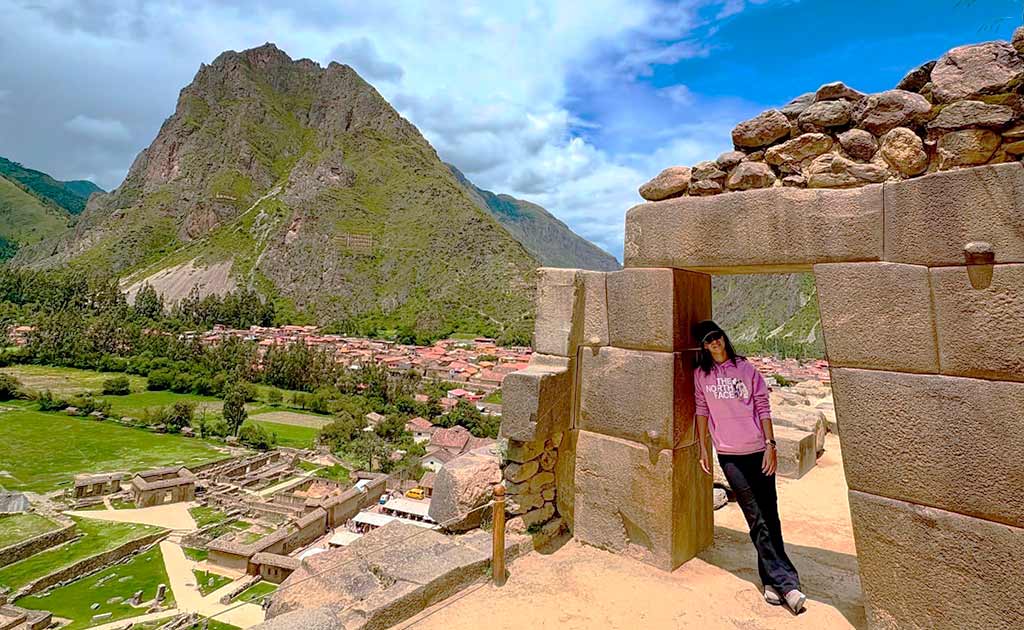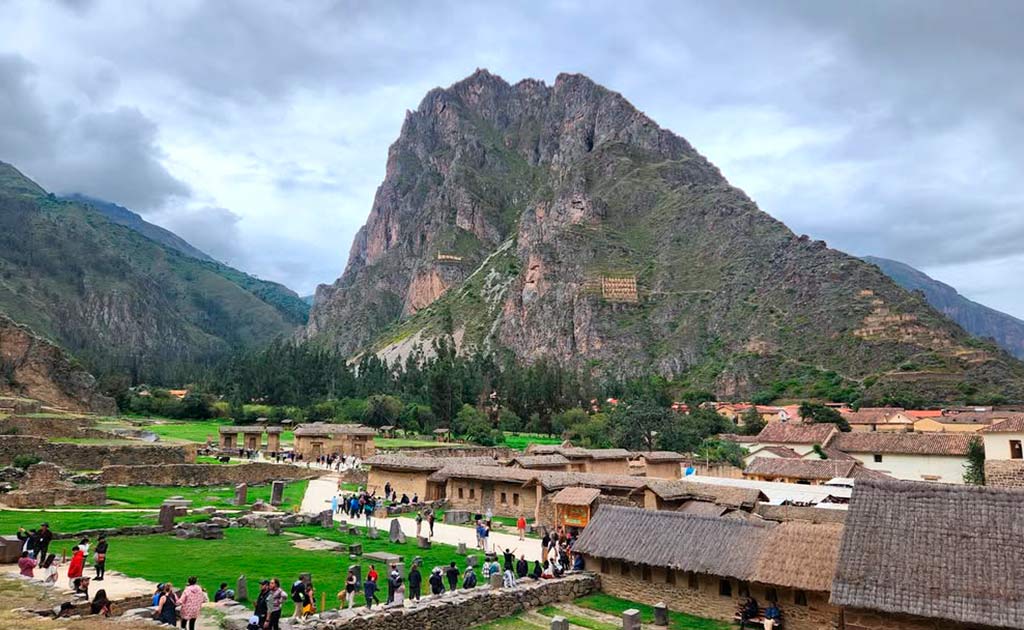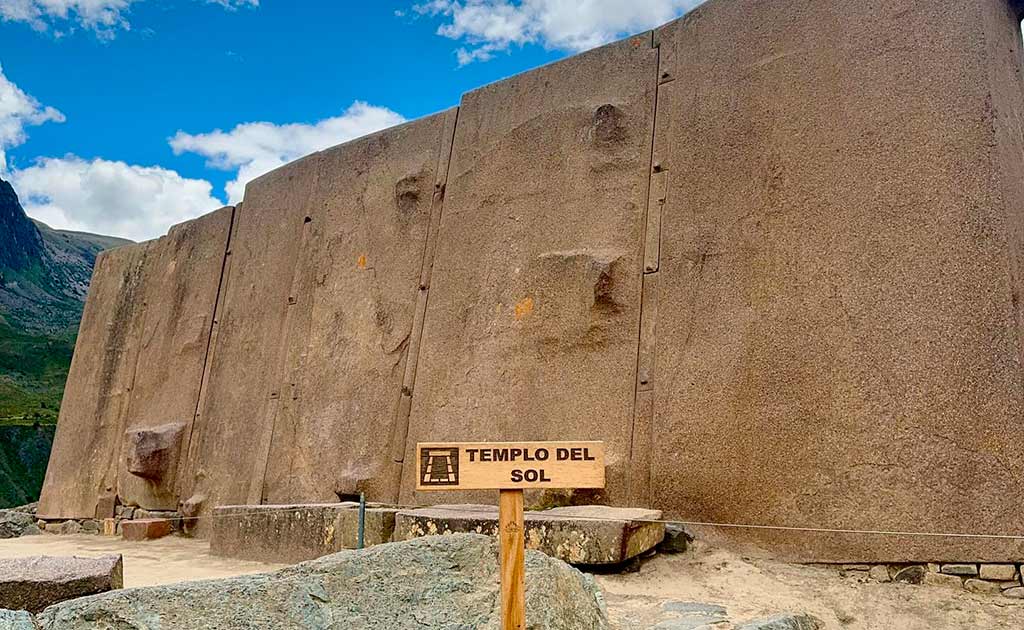07 May 2025
Archaeological Fortress of Ollantaytambo
Throughout the Sacred Valley, we will find various destinations full of activities, as well as important Inca citadels. One of them is the archaeological fortress of Ollantaytambo, one of the most important from the time of the Tahuantinsuyo. Discover more details about it and all the tours that take you there, so you can enjoy a much richer experience.

Contents
- What will I find in Ollantaytambo?
- What is the archaeological fortress of Ollantaytambo like?
- Where is Ollantaytambo?
- What to do in Ollantaytambo?
- Tours to the archaeological fortress of Ollantaytambo
- Tips for your visit to Ollantaytambo
- Frequently Asked Questions
What will I find in Ollantaytambo?
Ollantaytambo is an Inca town that preserves the architecture of precolonial times. Immersed in cobbled grounds and stone walls, its streets lead us through the ancient history lived within them.
It is one of the places that forms part of the Sacred Valley of the Incas, and serves as a departure point to the mythical wonder of Machu Picchu. Its architectural fortress, another major reason for visiting, is located just steps from the town center. Ollantaytambo is so small that it can be fully explored in half-day walks.
Around Ollantaytambo, you’ll also find other sites to visit, such as the Pinkuylluna fortress, the renowned trek to Inti Punku, the ceremonial center Ñaupa Iglesia, and the city of the pumas, Pumamarca.
What is the archaeological fortress of Ollantaytambo like?
Built by Inca Pachacútec, the archaeological fortress of Ollantaytambo served as a military, religious, administrative, and agricultural center. It is located atop two mountains, giving it a strategic vantage point to control the entire Sacred Valley. It also functioned as a tambo (food storage site) and an astronomical observation point thanks to its privileged location.
Within its archaeological area, you can see fountains, water channels, agricultural terraces, carved walls on slopes, stone stairways, stone niches, and the mythical Temple of the Sun, one of the main attractions composed of a structure of six massive stone monoliths.
There are also two sectors within the complex: the first, called Qosqo Ayllu, features an urban area; while the second, Araccama Ayllu, takes you through fortresses, terraced structures, stone enclosures, and monoliths.

Where is Ollantaytambo?
Ollantaytambo is located in the Sacred Valley of the Incas at an approximate altitude of 2,792 meters above sea level, about 80 kilometers from the city of Cusco. To reach this town, you need to travel by car for approximately 1 hour and 30 minutes from the city.
Due to its geography, Ollantaytambo lies beside the Urubamba River, surrounded by mountains that give it a mystical appearance, blending perfectly with the surrounding nature.
What to do in Ollantaytambo?
Visiting the magical town of Ollantaytambo gives you the opportunity to explore a wide variety of archaeological sites. Not only can you visit the main archaeological site, but also, from the town itself, you can access the Pinkuylluna fortress, which can be reached via a 30-minute hike up a mountain visible from nearly anywhere in the town center.
Within Ollantaytambo, you can visit traditional markets, artisan centers, restaurants offering a wide culinary variety, and even take part in cultural activities provided by both public and private venues.
Beyond the town, more destinations await. One of the most popular is the hike to Inti Punku (Sun Gate), which takes about 3 hours along a slightly steep path. Another option is a visit to the Ñaupa Iglesia ceremonial center, located just 10 minutes away by car from Ollantaytambo, where more Inca remains can be observed. The final architectural alternative is the city of the pumas, Pumamarca, which can be reached after a 20-minute car ride.

Tours to the archaeological fortress of Ollantaytambo
There are several options available to visit the archaeological fortress of Ollantaytambo through a tour, each designed to enrich your experience and make your trip a memorable journey. Discover all the available options.
Classic Sacred Valley Tour (1 day)
The classic tour of the Sacred Valley allows us to visit the archaeological fortress of Ollantaytambo along with the Pisac archaeological center and the Chinchero archaeological site, in a one-day journey that takes us to the main Inca citadels. Additionally, the tour includes a buffet lunch in Urubamba. The tour starts at 7:30 AM and ends at 6:00 PM.
VIP Sacred Valley Tour (1 day)
The second option is the VIP Sacred Valley tour, which, unlike the classic tour, adds a couple of extra destinations to the experience, which are the circular terraces of Moray and the Maras Salt Mines. A buffet lunch in Urubamba is also included. The trip starts at 6:40 AM and ends at 6:00 PM.
Sacred Valley + Machu Picchu Tour (2 days)
If you want to enhance your travel experience, we also offer the option of combining the Sacred Valley tour with the citadel of Machu Picchu, in a two-day tour. On the first day, you’ll explore iconic sites such as the Pisac archaeological complex and the architectural fortress of Ollantaytambo. Afterward, we’ll take a train to the town of Aguas Calientes, so that the next day we can visit Machu Picchu. The return to Cusco takes place in the afternoon.
Tips for your visit to Ollantaytambo
Your trip to Ollantaytambo should be the best possible experience, so we’re offering a series of tips to help you prepare in advance and handle any issues you might encounter during your visit.
- The Sacred Valley, along with Ollantaytambo, is one of the best places to acclimate during your first days of travel in Cusco, thanks to its average altitude of 2,900 meters above sea level and its mild climate.
- Take a break in the town of Ollantaytambo—it’s a magical place where you’ll find a perfect photo opportunity around every corner.
- Ollantaytambo is the gateway to the journey to Machu Picchu, as it hosts the main train station that will take you to the wonder of the world.
- Visiting Ollantaytambo during the dry season (April to October) will offer you clearer and more colorful weather, but there will also be more tourists.
- During the rainy season (November to March), your visit to Ollantaytambo may come with more chances of rain, but you’ll be able to explore it more easily and avoid large crowds.
- Take the hike to Inti Punku—you’ll discover stunning panoramic views of the entire valley and reach this mythical monument that offers a breathtaking landscape and a great place to rest.
- Take your time visiting the archaeological fortress of Ollantaytambo so you don’t miss any details, like the magical Temple of the Sun.
- Ollantaytambo is open every day of the year from 7:00 AM to 5:00 PM.
- To visit Ollantaytambo without a tour, you’ll need to purchase the Cusco Tourist Ticket (Boleto Turístico Integral) or the Tourist Ticket for Circuit 3, which also grants access to the Pisac archaeological center, the Chinchero archaeological park, and the circular terraces of Moray.
- You can plan a personalized Sacred Valley tour where you choose the itinerary. Talk to our advisors and discover all the available options we offer.

Frequently Asked Questions
1. What is Ollantaytambo?
Ollantaytambo is an ancient Inca town located in the Sacred Valley, known for its well-preserved Inca architecture.
2. What will I find in the archaeological fortress of Ollantaytambo?
Ollantaytambo features structures such as the Temple of the Sun, composed of six massive stone monoliths, as well as agricultural terraces, ceremonial enclosures, stairways, and water fountains.
3. Where is the fortress of Ollantaytambo located?
The fortress is located in the town of Ollantaytambo itself, just steps from the center. It is strategically situated atop two mountains, offering views of the entire Sacred Valley and the Urubamba River.
4. How do I get to Ollantaytambo from Cusco?
You can get there from the city of Cusco via a land trip of approximately 1 hour and 30 minutes.
5. What activities can be done in Ollantaytambo?
In addition to visiting the fortress, you can hike to nearby sites such as Pinkuylluna, Inti Punku, Ñaupa Iglesia, or Pumamarca. There are also artisan markets, local restaurants, and cultural centers offering a complete experience.
6. What are the best months to visit Ollantaytambo?
The dry season, from April to October, offers better weather conditions. However, from November to March, during the rainy season, there are fewer tourists, allowing for a more peaceful experience.
7. Can Ollantaytambo be visited independently?
Yes, it is possible to visit without a tour, but you must purchase the Cusco Tourist Ticket or the Circuit 3 Ticket. This also grants access to other archaeological sites such as Pisac, Chinchero, and Moray.
8. What are the opening hours of the archaeological site of Ollantaytambo?
The fortress is open every day of the year from 7:00 AM to 5:00 PM.
9. Is Ollantaytambo a good place to acclimate to the altitude?
Yes, thanks to its moderate altitude (2,792 meters above sea level), Ollantaytambo is ideal for acclimatizing before heading to higher-altitude destinations like Machu Picchu.
10. What other archaeological sites are near Ollantaytambo?
In addition to the main archaeological site, you can also visit the Pinkuylluna fortress, the Sun Gate (Inti Punku), the Ñaupa Iglesia ceremonial center, and Pumamarca, a citadel located among agricultural terraces.